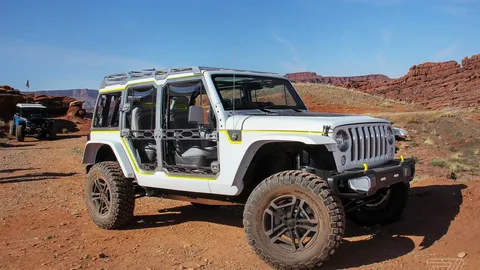Safari jeeps offer an exhilarating way to explore wild terrains and experience nature’s raw beauty. From the African Savannah to the Arabian deserts, these robust vehicles are synonymous with adventure and excitement. This article delves into everything you need to know about safari, including their history, features, and the top destinations for a safari experience.
The term “safari jeep” has its origins in the Swahili word “safari,” which means journey. The concept of using for safari jeeps began in the mid-20th century when adventurers sought more efficient means to navigate the rugged landscapes of Africa. These early safari were modified military vehicles, known for their durability and off-road capabilities. Over time, the safari evolved to become a symbol of exploration and a vital tool for wildlife enthusiasts.
Features of a Safari Jeep
A safari is not just any vehicle; it’s designed to tackle the most challenging terrains. Key features include:
1. **Four-Wheel Drive (4WD):** Essential for navigating uneven and unpredictable landscapes.
2. **Open Roof:** Provides unobstructed views for wildlife photography and sightseeing.
3. **Elevated Seating:** Offers better visibility and safety from wildlife.
4. **Reinforced Body:** Ensures durability and protection against rough terrain.
5. **All-Terrain Tires:** Provide superior grip and stability on various surfaces.
These features make the safari an ideal vehicle for both thrill-seekers and nature lovers.
African Savannah
Africa is undoubtedly the most popular destination for a safari adventure. Countries like Kenya, Tanzania, and South Africa offer unparalleled wildlife experiences. In the Masai Mara or Serengeti, a safari jeep takes you close to the action, where you can witness the Great Migration, lions on the prowl, and herds of elephants.
Arabian Deserts
The vast deserts of the Middle East, particularly in Dubai and Oman, provide a unique safari experience. Unlike the lush savannas, these desert safaris are characterized by dune bashing – driving at high speeds over sand dunes – which offers a thrilling ride combined with the opportunity to explore Bedouin culture and desert wildlife.
Indian Subcontinent
India’s diverse landscape offers another exciting safari destination. The national parks in India, like Antechamber and Jim Corbett, are famous for their tiger reserves. A safari here provides an adventurous journey through dense forests and grasslands, with the chance to spot the elusive Bengal tiger.
Australian Outback
The rugged terrain of the Australian Outback is perfect for a safari adventure. The vast, remote landscapes are home to unique wildlife, including kangaroos, dingoes, and emus. Exploring the Outback in a safari offers a sense of isolation and discovery that’s hard to match.
Planning Your Safari Jeep Adventure
Choosing the Right Tour Operator
Selecting a reputable tour operator is crucial for a successful safari experience. Look for operators with experienced guides, well-maintained vehicles, and praise. A knowledgeable guide can enhance your experience by sharing insights about the wildlife and landscapes.
Best Time to Go
The timing of your safari adventure can greatly impact your experience. For African safaris, the dry season (June to October) is ideal for wildlife viewing as animals gather around water sources. In the Middle East, the cooler months (November to March) are more comfortable for desert safaris.
What to Pack
Packing for a safari adventure requires careful consideration. Essentials include:
– **Binoculars:** For close-up views of distant wildlife.
– **Camera:** To capture stunning landscapes and wildlife moments.
– **Comfortable Clothing:** Lightweight, breathable fabrics in neutral colors.
– **Sun Protection:** Hats, sunglasses, and sunscreen are vital for protection against the sun.
– **Insect Repellent:** Especially important in tropical and subtropical regions.
Safety Tips for a Safari Jeep Adventure
Safety is paramount during any safari adventure. Here are some key tips:
– **Stay Inside the Vehicle:** Always remain inside the safari to avoid any dangerous encounters with wildlife.
– **Follow Guide Instructions:** Pay close attention to the guide’s advice and instructions.
– **Keep Noise to a Minimum:** Loud noises can startle wildlife and disrupt the experience.
– **Secure Belongings:** Ensure all belongings are securely stowed to prevent loss during bumpy rides.
– **Hydrate and Eat Wisely:** Drink plenty of water and eat light meals to stay energized and comfortable.
The Future of Safari Jeeps
The safari is continually evolving with advancements in technology. Electric safari are becoming more popular, offering a quieter and more Eco-friendly alternative to traditional diesel-powered vehicles. These innovations not only reduce the environmental impact but also provide a more immersive wildlife experience with less noise pollution.
Conclusion
A safari adventure is a thrilling way to explore some of the world’s most spectacular landscapes and wildlife. Whether you’re traversing the African Savannah, the Arabian deserts, the Indian jungles, or the Australian Outback, the safari jeep remains an iconic symbol of adventure and exploration. With the right preparation and a spirit of adventure, a safari journey promises unforgettable memories and a deeper connection with nature.
Embark on your safari adventure today and experience the thrill of the wild like never before!





